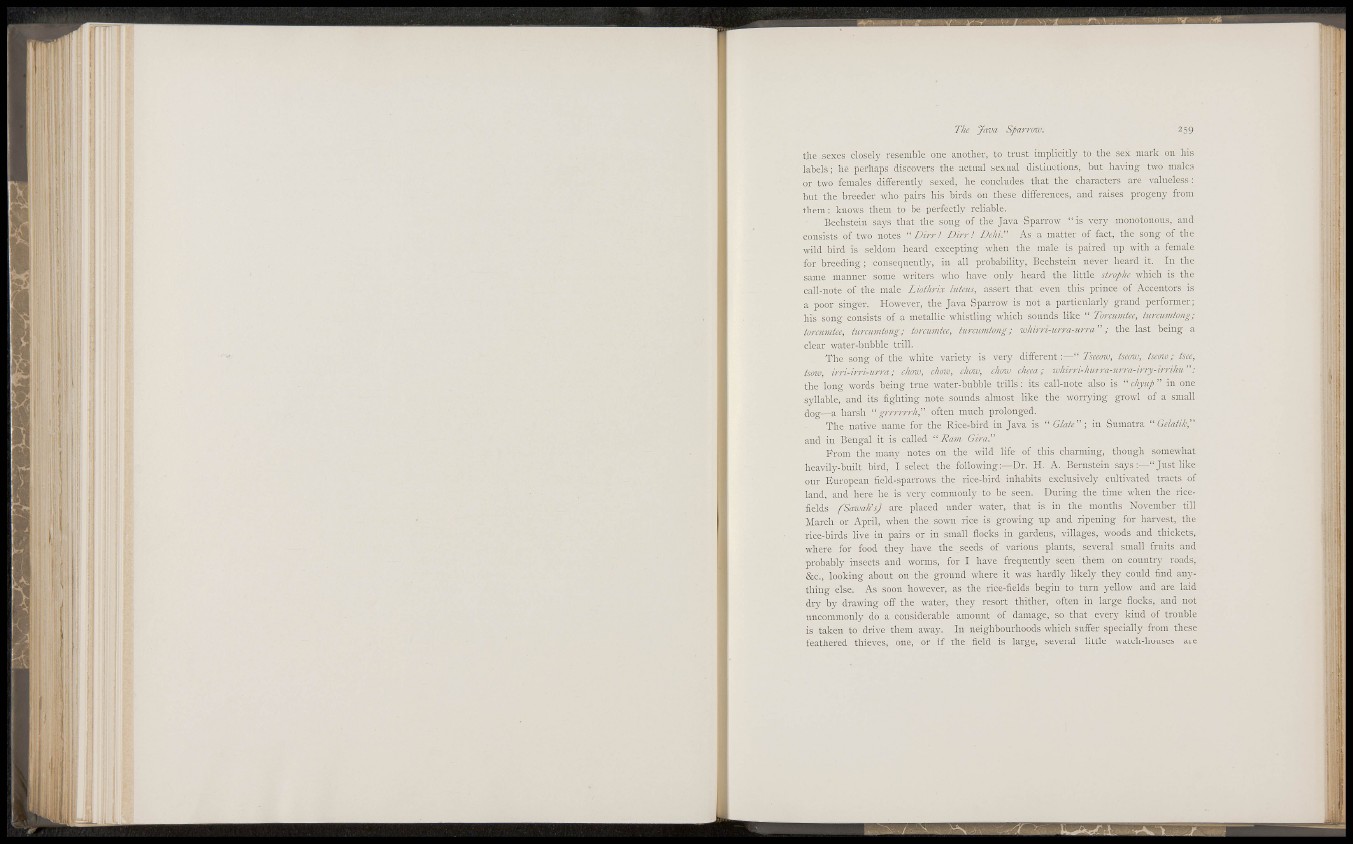
I 'j
f
1 IVllH
I
i
ih i'i I
i 'M
1?! •
! )i . ; '
i V • I'
I , :
•r h
I
M
I' !
X
1
,1
The Java Sparrow. 259
the sexes closely resemble one anotlier, to trust implicitly to the sex mark on his
labels; lie perhaps discovers the actual sexual distinctions, but having two males
or two females differently sexed, he concludes that the characters are x-alueless ;
but the breeder who pairs his birds on these differences, and raises progeny from
them ; knows them to be perfectly reliable.
Bechstein says that the song of the Java Sparrow " is very monotonous, and
consists of two notes " Dirr! Dirr! Dclii." As a matter of fact, the song of the
wild bird is seldom heard excepting when the male is paired up with a female
for breeding ; consequently, in all probability, Bechstein never heard it. In the
same manner some writers who have only heard the little strophe which is the
call-note of the male Liothrix lutciis, assert that even this prince of Accentors is
a poor singer. However, the Java Sparrow is not a particularly grand performer;
his song consists of a metallic whistling which sounds like " Torcmntec, iurcumtoiig;
ioraimtce, turcumtong; torcwmtee, turcumtong; 'cuhirri-urra-urra"; the last being a
clear water-bubble trill.
The song of the white variety is very different:—" Tseeoiv, fscow, iseoiv; tsec,
tsozv, irri-irri-iirra; chow, chow, chovj, choiv chem; whirri-hufra-urra-irry-irrihu":
the long words being true water-bubble trills: its call-note also is ''chywp" in one
syllable, and its fighting note sounds almost like the wori-jdng gro^vl of a small
dog—a harsh " grrrrrrh," often much prolonged.
The native name for the Rice-bird in Java is " date" ; in Sumatra " Gelatih,"
and in Bengal it is called "Ram Gira."
From the many notes on the wild life of this charming, though somewhat
heavily-built bird, I select the following:—Dr. H. A. Bernstein says : - - " Jus t like
our European field-sparrows the rice-bird inhabits exclusively cultivated tracts of
land, and here he is very commonly to be seen. During the time when the ricefields
(Sawah'sJ are placed under water, that is in the mouths November till
March or April, when the sown rice is growing up and ripening for harvest, the
rice-birds live in pairs or in small flocks in gardens, villages, woods and thickets,
where for food they have the seeds of various plants, several small fruits and
probably insects and worms, for I have frecjuently seen them on countrj- roads,
&c., looking about on the ground where it was hardly likely they could find anything
else. As soon however, as the rice-fields begin to tnrn yellow and are laid
dry by drawing off the water, they resort thither, often in large flocks, and not
uncommonly do a considerable amount of damage, so that every kind of trouble
is taken to drive them away. In neighbourhoods which suffer specially from these
feathered thieves, one, or if the field is large, several little watch-houses are